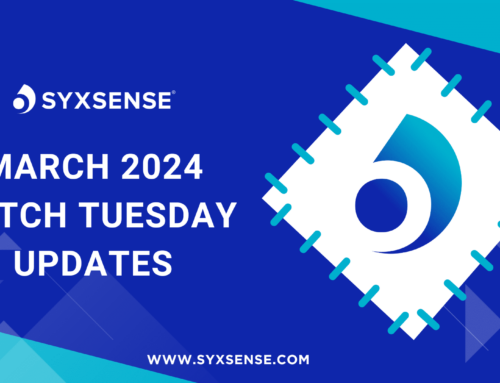
6 Ways Patch Management is Letting You Down
Is your patch tool letting you down?
There are plenty of patch management tools available — their job is to issue updates and fixes that plug security holes in applications and operating systems.
Patching safeguards organization from exposure to cyberattack. It provides the latest feature improvements and updates and ensures compliance to a wide range of security mandates.
However, the level of effectiveness varies from one tool to another. Here are six ways your patch management solution may be letting you down.
1. Lack of Patch Supersedence
“Supersede’ means to replace an older thing with a newer one. An organizational policy restricting work-from-home to one day per week, for example, may have recently been superseded by a new policy requiring all employees to work from home.
How does this relate to patching? Take the case of an IT provider that releases a patch every few weeks. Over the course of six months, that’s a lot of patches.
Some tools scan systems and report that all these patches are points of potential exposure and must be remedied immediately. Yet quite often, vendors bundle older patches into new releases. The new patch supersedes the older ones.
There are many tools around that don’t take patch supersedence into account. They unnecessarily alarm IT managers with long lists of vulnerabilities when in fact there are only a few patches to take care of. Inexperienced personnel may even waste time addressing the most outdated patches first.
Recommendation: Only use patch management products that recognize supersedence.
2. No Patch Roll Back
The last thing you want is for an update to cause incompatibilities in other system. That’s why software vendors and IT departments conduct testing to ensure patches are benign. But despite the precautions, faulty patches can occasionally happen.
The solution is a patch roll back feature that allows you to return your systems to the state that existed before the implementation of the new patch. Some tools support this feature, others don’t. In product selection, narrow the candidates down to those that do.
3. Slow Motion Patching
Hackers and cybercriminals move fast. When a new weakness is discovered, word spreads rapidly around the dark web — there is no time to lose in installing patches.
Yet delays in testing and distributing patches are not uncommon. The vendor may have gotten behind in reviewing a surge of patches from a great many application providers responding to the latest attack vector. Whatever the reason, it is the responsibility of the provider to make patches available rapidly. Demand that patches be tested and distributed within a few hours of their release.
4. Lack of Automation
With hundreds or even thousands of endpoints to manage, lack of automation can delay the implementation of a critical patch. It saves time if IT does not have to formulate scripts, hop from one screen to another, or manually push out patches to various destinations.
The best patch management solutions provide drag-and-drop features, as well as automation of processes and multistage tasks: for example, automating a sequence such as patching VM guests and rebooting them, then patching their host, and performing a separate reboot.
5. Hogging Bandwidth
Some patch management tools include features to push out software to users as well as the latest patches. This can pose problems by tying up bandwidth. Imagine pushing Microsoft Office out to hundreds of endpoints – that amounts to TBs of data. What is needed is software that intelligently distributes applications and patches without tying up bandwidth across the enterprise.
6. Poor Reporting
It is one thing to say all systems are patched and fully updated. But it is another to be able to prove it.
Reporting, therefore, is a vital element of compliance. Yet some patch management tools lack reporting features. Others provide reports that may not be good enough for compliance purposes or security audits. Insist upon enough reporting to satisfy your compliance and management requirements.
Simple and Powerful Patch Management
Syxsense lets you easily manage unpatched vulnerabilities with the click of a button. It includes patch supersedence, patch roll back, and a wealth of automation features.
In addition, it provides a three-hour turnaround for the testing and delivery of new patches as well as technology to send software and patches across the wire once, using peer-to-peer within the network for local distribution.
Start Your Free Trial of Syxsense
Syxsense combines IT management, patch management, and security vulnerability scanning in one powerful solution. Get started today.




